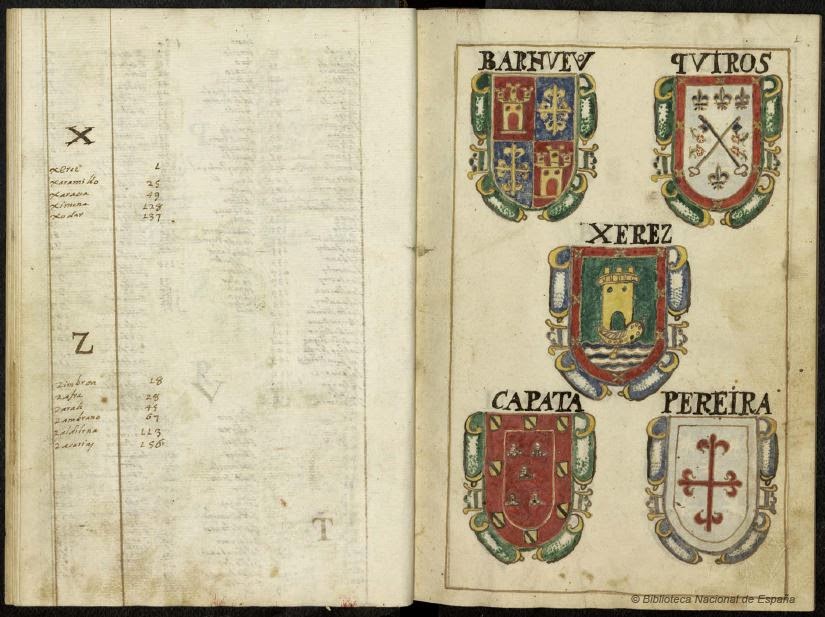![By Celtus (Celtus @ english wikipedia) [CC-BY-SA-3.0 (http://creativecommons.org/licenses/by-sa/3.0)], via Wikimedia Commons](http://upload.wikimedia.org/wikipedia/commons/5/57/Clan_member_crest_badge_-_Clan_Arbuthnott.svg)
19th Century Spanish records document the interesting history of a branch of the distinguished family of Arbuthnott. A gentleman by the name of Jaime Arbuthnot y Arbuthnot was training for the priesthood in Spain when the Peninsular War erupted. In British Liberators in the Age of Napoleon, Dr Graciela Iglesias Rogers speculates at his origin, and 'perhaps illegitimate birth into an aristocratic family as well'. Certainly James Arbuthnot could simply have hispanicised his first name as Jaime; the use of one's mother's surname after the father's is conventional but was not mandatory in his day. In underscoring the fact that his mother too was an Arbuthnot, James perhaps alluded to an even darker secret than illegitimacy.
Whatever the truth regarding his origin, James left the seminary and served with distinction under the Spanish colours. The Spanish Army holds a service record referring to Jaime Arbuthnot y Arbuthnot - as he spelled the surname - as a Field Marshal, and states that he was born in Edinburgh on 24th December 1791, and died in La Coruña on 16th June 1863. It further describes him as being of noble birth. James, or Jaime as he was always called in Spain, married a lady named María de los Dolores Zuazo, a native of the Andalusian town of Puerto Real, and they had at least three children:
- Jaime, born in Saragossa on 7th September 1834, who became a Commander in Spain's paramilitary Guardia Civil and married twice: first to Emilia Beinet y Bonset, on 22nd December 1861; secondly, to Juana Salord y Escudero, on 10th October 1867;
- Matilde, baptised at Logroño's church of Santa María la Redonda on 26th July 1836; and
- Federico, baptised at Barcelona's church of San José on 27th June 1841, at which time his father was stated to be a Brigadier of Infantry and Colonel of Spain's 'Regimiento de América'.
This last record names the child's paternal grandparents as Sir William Arbuthnott and María Ana Arbuthnott, both natives of Edinburgh; and these are also the parents attributed to James in his own military record.
One wonders if this data is enough to allow a researcher knowledgeable in contemporary Scottish families to link James and his Spanish descendants to the greater Arbuthnott tree. I cannot see, from materials presently availiable online, that this has been done.
SOURCES: Graciela Iglesias Rogers, British Liberators in the Age of Napoleon: Volunteering under the Spanish Flag in the Peninsular War, P. 13; General Military Archive, Segovia, Personnel files of Jaime Arbuthnot y Arbuthnot and Jaime Arbuthnot y Zuazo; Army Ecclesiastical Archive, Madrid, Book 198 [America Infantry Regiment, 1st Batallion, Sacramental Records 1828-1843], P. 19 verso

![By Sedessapientiae (Own work) [GFDL (http://www.gnu.org/copyleft/fdl.html) or CC-BY-SA-3.0-2.5-2.0-1.0 (http://creativecommons.org/licenses/by-sa/3.0)], via Wikimedia Commons](http://upload.wikimedia.org/wikipedia/commons/f/f8/Catedral_de_C%C3%A1diz.jpg)








